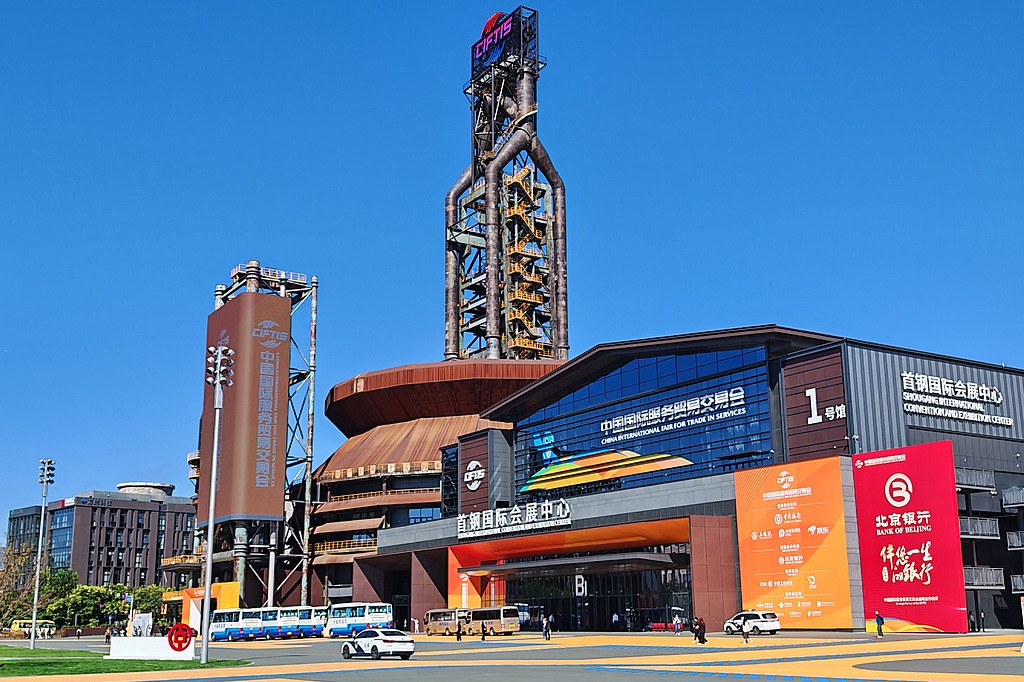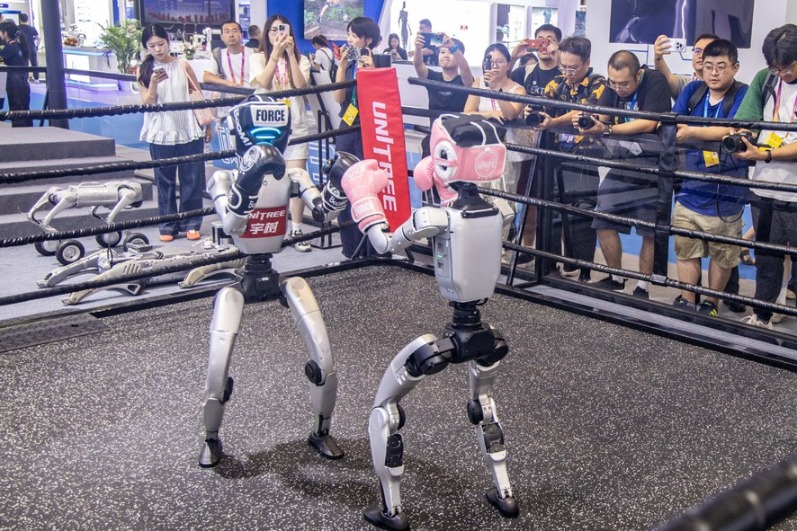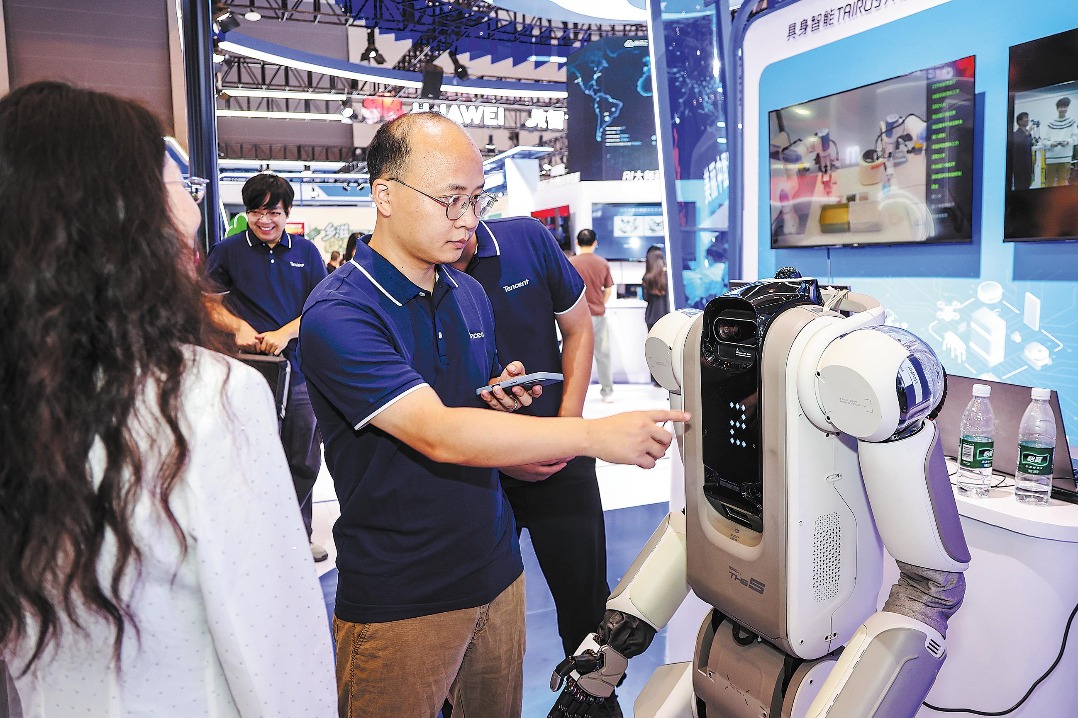Self-driving to revolutionize transportation
Large-scale commercial use of tech may become reality sooner than expected


Quick deployment
Lyu Jinghong, an analyst tracking intelligent mobility at research company BloombergNEF, said continued tests on public roads, eased regulations, as well as cost reductions in autonomous vehicle manufacturing, will help accelerate the deployment and commercialization of self-driving vehicles.
Noting that China had caught up with the United States in developing autonomous driving, Lyu said clear national-level regulations will encourage local governments and autonomous driving companies to quicken the use of self-driving technology, which is crucial for achieving commercialization targets.
According to BloombergNEF's 2022 Electric Vehicle Outlook, China will operate the world's largest robotaxi fleet with some 12 million autonomous vehicles by 2040, followed by the US, with about 7 million such vehicles.
Chinese technology companies have been striving to advance the technology and accelerate the commercial use of autonomous driving vehicles.
Tech heavyweight Baidu Inc's fully autonomous driving robotaxis, with no driver or safety operator inside, are now operating in some designated areas of Beijing, Chongqing, Wuhan and Shenzhen, Guangdong province. In case of an emergency, a remote safety supervisor takes control of the vehicle via an online assistance platform.
Wuhan is stepping up efforts to promote the development of intelligently connected vehicles and commercialization of driverless technology, boasting the largest operational region for Baidu's autonomous ride-hailing platform Apollo Go.
The Beijing-based company said it has more than 500 robotaxis running in Wuhan and expects to increase that number to 1,000 by the end of this year. It plans to expand its fleet size and service area nationwide and build the world's largest fully driverless ride-hailing area.
With decreasing costs and increasing orders, Apollo Go is expected to turn profitable by 2025, Baidu said.
In the first quarter, Baidu's Apollo Go provided about 826,000 rides, up 25 percent year-on-year. As of April 19, the cumulative rides provided to the public by Apollo Go surpassed 6 million, the company said in its latest financial results.
Chinese self-driving startup Pony.ai is stepping up efforts to launch robotaxi services in an attempt to bolster large-scale commercial use of growing transportation solutions.
The company said earlier this month that it has received permits to operate fully driverless robotaxis, in which no safety supervisors are present, in a 205-kilometer route in the Pudong New Area. Prior to receiving approval in Shanghai, Pony.ai had already obtained licenses for fully driverless robotaxi services in Beijing, Guangzhou, and Shenzhen.
Global consulting firm McKinsey& Company has forecast that China will become the world's largest market for self-driving vehicles, with revenue from such vehicles and mobility services exceeding $500 billion by 2030.
Li Xinbo, an automotive industry expert at China Auto Information Technology Co, said greater efforts are needed to strengthen construction of intelligent transportation infrastructure, such as the 5G-enabled vehicle-to-everything or V2X system, which supports the transfer of information from a vehicle to moving parts of the traffic system to improve efficiency.
However, a self-driving taxi operated by Baidu recently hit a pedestrian crossing a traffic light in Wuhan, sparking heated discussions online about the challenges facing autonomous driving technology.
Some local residents have also complained that autonomous driving cars cause traffic jams by driving slowly and stopping unexpectedly.
Zhang Xiang, an auto sector researcher at North China University of Technology, said the incident in Wuhan indicates that although self-driving technology has advanced significantly over the past few years, it still encounters difficulties under complicated and ever-changing road conditions and faces limitations while handling unconventional behavior, such as motorists or pedestrians violating traffic rules.
Noting that the nationwide, large-scale commercialization of autonomous driving technology will take about 10 years, he said that "ensuring the safety and stability of robotaxis remains a top priority."
Zhang said more efforts are required to enhance self-driving testing and application scenarios, continuously optimize algorithms, reduce the manufacturing costs of driverless vehicle components, as well as strengthen the construction of intelligent transportation infrastructure.
Moreover, the rising prominence of robotaxis in more Chinese cities has raised concerns about employment, as taxi drivers are worried about losing their jobs given that robotaxis are typically cheaper than traditional ones.
"Currently, driverless cars will not pose a challenge to the traditional taxi sector because people are only inclined to experience this emerging technology, and the number of robotaxis on the road is still far fewer than regular taxis," said Pan Helin, a member of the MIIT's Expert Committee for Information and Communication Economy.
He said the pressure on taxi drivers mainly comes from intense competition between private ride-hailing cars and traditional taxis, adding that autonomous driving vehicles will not either seriously impact the job market or replace human drivers in the short term.
Gu Dasong, executive director of the Southeast University's Research Center for Transportation Law and Development, said commercial operation of self-driving ride-hailing vehicles might reduce the need for traditional drivers, such as taxi drivers and freight drivers, to some extent over the long term.
However, this replacement involves the upgrading of employment structure, rather than the disappearance of jobs, and it will profoundly transform the labor market, given that new job opportunities might come with the rising robotaxi services, Gu added.



































